Five project megatrends to watch in 2023
4 January 2023

High oil prices, the journey to net zero and Cop28 in the UAE, property markets, Saudi gigaprojects and deepening regional integration will all be key themes in 2023 that will have a strong bearing on some of the region’s largest projects and programmes of construction work.
These are five of the key megatrends to watch in 2023:
| 1. Neom |
Neom will be a focus of attention for the global construction sector in 2023.
Announced by Saudi Crown Prince Mohammed bin Salman in 2017 with a project value of $500bn, the project arguably failed to live up to expectations following its launch as efforts focused on preparing concepts and designs with little onsite construction activity.
That changed dramatically in 2022 as contractors signed major contracts across the project’s key components. One key development was the signing of construction contracts for the $6.5bn Neom green hydrogen project, which involves building a hydrogen-based ammonia production facility powered by renewable energy.
Other large construction contracts were signed for tunnelling works for The Line, which is a 170-kilometre infrastructure corridor with a highspeed rail system and two rows of interconnected 500-metre-tall-mirrored buildings. Crucially these contracts were won by joint ventures comprising some of the world’s leading names in construction, indicating a shift of opinion within the international community towards the project and its opportunities.
There are plenty more contracts to be tendered and awarded in 2023. There is high-level political pressure for progress to be made on the project, and last year the mountain resort of Trojena was selected to host the 2029 Asian Winter Games giving the project a hard deadline.
As onsite activity gathers momentum, Neom will finally deliver on its promise of being the region’s largest project by far.
| 2. Hydrogen |
Some say hydrogen will follow a similar story to the one experienced by solar power over the past decade, while others say it is reminiscent of the early days of liquefied natural gas (LNG).
The Middle East will play a leading role in deploying this relatively new technology following a slew of project announcements in recent years. The value of all announced hydrogen plants in the Middle East and Africa is now estimated to exceed $70bn. This total rises to more than $120bn if other elements, such as air separation units, export facilities and renewable energy complexes, are included.
These projects are already resulting in contract awards for contractors, and as more schemes move into the construction phase, hydrogen will become an increasingly important industry for the region.
| 3. Rail |
Rail is back. After years of stalled projects, momentum has finally returned to the rail sector as regional governments press ahead with rail projects.
The data shows the impact of these efforts. With $10.7bn of contract awards, 2022 was the best year for the region’s rail sector since 2013, according to data from regional projects tracker MEED Projects.
READ MORE: Railway diplomacy
Even more encouraging is that headway is being made on planned projects expected to be tendered and awarded in the coming two years. The progress is across the region, but most noticeable in the GCC, where there has been a top-down drive to get the GCC Rail Project moving again following the Al-Ula declaration in 2021.
In 2022, design work started and progressed on a series of major rail schemes that should move towards tendering for construction contracts by the end of 2023. Once that happens, the region will be well on course to finally surpass its 2013 peak.
| 4. Dubai real estate |
 Dubai’s property market was in rude health in 2022 with double-digit gains in values across multiple asset classes, including residential and commercial space. There was also a wide variety of new project launches, ranging from villa communities to tall towers and offshore islands (again).
Dubai’s property market was in rude health in 2022 with double-digit gains in values across multiple asset classes, including residential and commercial space. There was also a wide variety of new project launches, ranging from villa communities to tall towers and offshore islands (again).
The Covid-19 pandemic allowed Dubai to position itself as a home for the wealthy. Compared to other global cities such as London, New York, Paris and Hong Kong, property valuations in the emirate remain highly competitive, even after a year of strong growth.
Prices are also still below the 2014 peak, which suggests the market has the potential to go even higher in 2023. Strong sales and rising prices due to limited supply have meant developers are launching new projects to satisfy demand.
As projects become more daring and ambitious, a key question will be whether Dubai’s construction sector still has the appetite for major projects. Over the past five years, international players have left the market and, in 2020, the UAE’s largest general contractor, Arabtec Construction, filed for bankruptcy.
The plight of these companies is a reminder that Dubai’s property market is cyclical, and while there may be good times today, things may not be so good in the future.
READ MORE: Real Estate Returns
| 5. Saudi nuclear |
It takes years to prepare the regulations and designs for nuclear power plants. Saudi Arabia is no different. It has been pursuing its nuclear strategy since 2016. While progress may appear slow, experience from other markets has shown that nuclear power plants become significant undertakings once they move into construction. For example, the contract to build Abu Dhabi's nuclear reactors, signed by a South Korean consortium in late 2009, was valued at $20bn.
In Saudi Arabia, preparatory work is proceeding for its nuclear power programme, which is being pursued with a three-pronged strategy. Most of the nuclear power capacity will be developed through conventional, large-scale nuclear facilities, such as the one being studied by major consultants.
READ MORE: Nuclear power's strategic importance grows
The kingdom also plans to develop atomic energy through a series of smaller, system-integrated modular advanced reactor technology (Smart) nuclear power plants. The third pillar involves mining uranium resources to fuel the plants, as highlighted earlier this year by the kingdom's energy minister.
In March 2022, it was reported that Saudi Arabia had established a holding company to develop nuclear power projects in the country. Also over the past year, the King Abdullah City for Atomic & Renewable Energy (KA-Care) awarded three separate contracts for the legal, technical and financial advisory works for the project.
As these plans progress towards the tender of contracts, contractors are preparing themselves for the construction phase. For example, in late 2021, MEED reported that local contracting company Nesma & Partnerships had signed a memorandum of understanding with France’s Bouygues Travaux Publics to jointly execute civil works for a potential nuclear power plant project in Saudi Arabia.
Exclusive from Meed
-
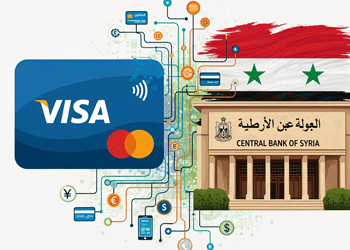 Visa agrees to support digital payments in Syria
Visa agrees to support digital payments in Syria5 December 2025
-
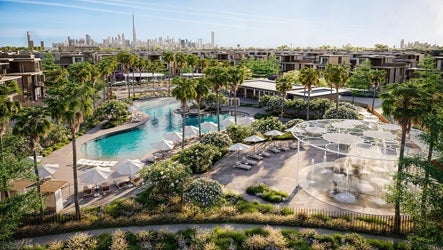 Meraas announces next phase of Nad Al-Sheba Gardens
Meraas announces next phase of Nad Al-Sheba Gardens5 December 2025
-
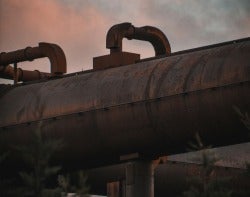 Frontrunner emerges for Riyadh-Qassim IWTP
Frontrunner emerges for Riyadh-Qassim IWTP5 December 2025
-
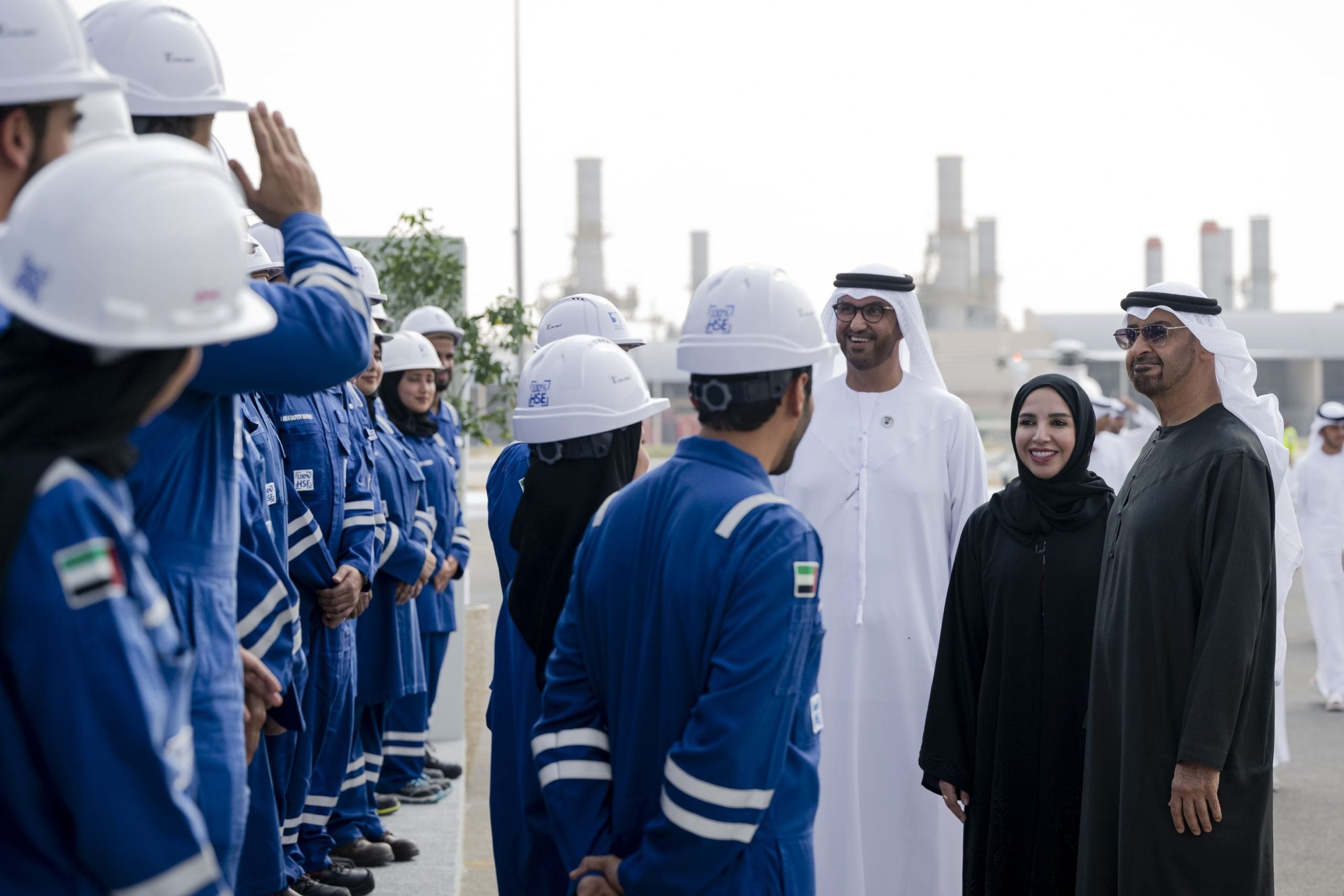 Adnoc creates new company to operate Ghasha concession
Adnoc creates new company to operate Ghasha concession5 December 2025
-
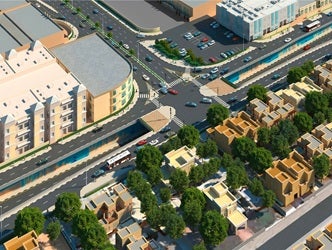 Dubai RTA announces Al-Wasl road development project
Dubai RTA announces Al-Wasl road development project5 December 2025
All of this is only 1% of what MEED.com has to offer
Subscribe now and unlock all the 153,671 articles on MEED.com
- All the latest news, data, and market intelligence across MENA at your fingerprints
- First-hand updates and inside information on projects, clients and competitors that matter to you
- 20 years' archive of information, data, and news for you to access at your convenience
- Strategize to succeed and minimise risks with timely analysis of current and future market trends

Related Articles
-
 Visa agrees to support digital payments in Syria
Visa agrees to support digital payments in Syria5 December 2025
Visa and the Central Bank of Syria have agreed on a strategic roadmap that will allow the US-based card and digital payments company to begin operations in Syria and support the development of a modern digital payments system.
Under the agreement, Visa will work with licensed Syrian financial institutions under a phased plan to establish a secure foundation for digital payments.
The early stages will involve Visa supporting the central bank in issuing Europay, Mastercard and Visa (EMV)-compliant payment cards and enabling tokenised digital wallets – bringing the country in line with internationally interoperable standards.
Visa will also provide access to its platforms, including near-field communication (NFC) and QR-based payments, invest in local capacity building and support local entrepreneurs seeking to develop solutions leveraging Visa’s global platform.
“A reliable and transparent payment system is the bedrock of economic recovery and a catalyst that builds the confidence required for broader investment to flow into the country,” noted Visa’s senior VP for the Levant, Leila Serhan. “This partnership is about choosing a path where Syria can leapfrog decades of legacy infrastructure development and immediately adopt the secure, open platforms that power modern commerce.”
The move marks one of the most significant steps yet in Syria’s slow and uneven return to the formal global financial system and carries implications that reach beyond just payments technology.
It lays the groundwork for overturning more than a decade of financial isolation in which Syria has operated largely outside global banking and settlement networks.
Visa’s entry will not erase all existing barriers – as many restrictions remain in force and will continue to shape what is practically possible – but its support signals a reopening of channels that could smooth Syria’s reintegration into financial networks.
The involvement of the US-based payments provider is also a further tacit sign of the US government’s enthusiastic bear hug of the new post-Assad Syrian government under President Ahmed Al-Sharaa.
For investors assessing long-term opportunities, the presence of a globally recognised payments operator will provide reassurance that Syria’s financial system is returning to international norms, and the security and transparency that comes with it.
https://image.digitalinsightresearch.in/uploads/NewsArticle/15207198/main.gif -
 Meraas announces next phase of Nad Al-Sheba Gardens
Meraas announces next phase of Nad Al-Sheba Gardens5 December 2025
Dubai-based real estate developer Meraas Holding, which is part of Dubai Holding, has announced the eleventh and final phase of its Nad Al-Sheba Gardens residential community in Dubai.
It includes the development of 210 new villas and townhouses and a school, which will be located at the northwest corner of the development.
The latest announcement follows Meraas awarding a AED690m ($188m) contract for the construction of the fourth phase of the Nad Al-Sheba Gardens community in May, as MEED reported.
The contract was awarded to local firm Bhatia General Contracting.
The scope of the contract covers the construction of 92 townhouses, 96 villas and two pool houses.
The contract award came after Dubai-based investment company Shamal Holding awarded an estimated AED80m ($21m) contract to UK-based McLaren Construction last year for the Nad Al-Sheba Gardens mall.
The project covers the construction and interior fit-out of a two-storey mall, covering an area of approximately 12,600 square metres.
The UAE’s heightened real estate activity is in line with UK analytics firm GlobalData’s forecast that the construction industry in the country will register annual growth of 3.9% in 2025-27, supported by investments in infrastructure, renewable energy, oil and gas, housing, industrial and tourism projects.
The residential construction sector is expected to record an annual average growth rate of 2.7% in 2025-28, supported by private investments in the residential housing sector, along with government initiatives to meet rising housing demand.
https://image.digitalinsightresearch.in/uploads/NewsArticle/15206904/main.jpg -
 Frontrunner emerges for Riyadh-Qassim IWTP
Frontrunner emerges for Riyadh-Qassim IWTP5 December 2025

Saudi Arabia’s Vision Invest has emerged as frontrunner for the contract to develop the Riyadh-Qassim independent water transmission pipeline (IWTP) project, according to sources.
State water offtaker Saudi Water Partnership Company (SWPC) is preparing to award the contract for the IWTP "in the coming weeks", the sources told MEED.
The project, valued at about $2bn, will have a transmission capacity of 685,000 cubic metres a day. It will include a pipeline length of 859 kilometres (km) and a total storage capacity of 1.59 million cubic metres.
In September, MEED reported that bids had been submitted by two consortiums and one individual company.
The first consortium comprises Saudi firms Al-Jomaih Energy & Water, Al-Khorayef Water & Power Technologies, AlBawani Capital and Buhur for Investment Company.
The second consortium comprises Bahrain/Saudi Arabia-based Lamar Holding, the UAE's Etihad Water & Electricity (Ewec) and China’s Shaanxi Construction Installation Group.
The third bid was submitted by Saudi Arabia's Vision Invest.
It is understood that financial and technical bids have now been opened and Vision Invest is likely to be awarded the deal.
The Riyadh-based investment and development company made a "very aggressive" offer, one source told MEED.
In November, the firm announced it had sold a 10% stake in Saudi Arabia-based Miahona as part of a strategy to reallocate capital "towards new and diversified investments".
The company did not disclose which projects the capital might be reallocated towards.
As MEED recently reported, Vision Invest is also bidding for two major packages under Dubai's $22bn tunnels programme in a consortium with France's Suez Water Company.
The Riyadh-Qassim transmission project is the third IWTP contract to be tendered by SWPC since 2022.
The first two are the 150km Rayis-Rabigh IWTP, which is under construction, and the 603km Jubail-Buraydah IWTP, the contract for which was awarded to a team of Riyadh-based companies comprising Al-Jomaih Energy & Water, Nesma Group and Buhur for Investment Company.
Like the first two IWTPs, the Riyadh-Qassim IWTP project will be developed using a 35-year build-own-operate-transfer contracting model.
Commercial operations are expected to commence in the first quarter of 2030.
https://image.digitalinsightresearch.in/uploads/NewsArticle/15206609/main.jpg -
 Adnoc creates new company to operate Ghasha concession
Adnoc creates new company to operate Ghasha concession5 December 2025
Register for MEED’s 14-day trial access
The board of directors of Abu Dhabi National Oil Company (Adnoc Group) has approved the establishment of a new company to operate the Ghasha offshore sour gas concession in Abu Dhabi waters.
The decision to create the new entity, to be called Adnoc Ghasha, was taken during a recent meeting of Adnoc Group’s board in Abu Dhabi, which was chaired by Sheikh Mohamed Bin Zayed Al-Nahyan, UAE President and Ruler of Abu Dhabi.
Adnoc Group owns and operates the Ghasha concession, holding the majority 55% stake. The other stakeholders in the asset are Italian energy major Eni with a 25% stake, Thailand’s PTTEP Holding, which holds a 10% interest, and Russia’s Lukoil, owning the remaining 10% stake.
The Ghasha concession consists of the Hail and Ghasha fields, along with the Hair Dalma, Satah al-Razboot (Sarb), Bu Haseer, Nasr, Shuwaihat and Mubarraz fields.
Adnoc expects total gas production from the concession to ramp up to more than 1.8 billion cubic feet a day (cf/d) before the end of the decade, along with 150,000 barrels a day of oil and condensates. This target will mainly be achieved through the Hail and Ghasha sour gas development project.
In October 2023, Adnoc and its partners awarded $16.94bn of engineering, procurement and construction (EPC) contracts for its Hail and Ghasha project – the biggest capital expenditure made by the Abu Dhabi energy company on a single project in its history.
Adnoc awarded the onshore EPC package to Italian contractor Tecnimont, while the offshore EPC package was awarded to a consortium of Abu Dhabi’s NMDC Energy and Italian contractor Saipem.
The $8.2bn contract relates to EPC work on offshore facilities, including facilities on artificial islands and subsea pipelines.
The Hail and Ghasha development will also feature a plant that will capture and purify carbon dioxide (CO2) emissions for sequestration (CCS), in line with Adnoc’s committed investment for a carbon capture capacity of almost 4 million tonnes a year (t/y). The CO2 recovery plant will have a total capacity to capture and store 1.5 million t/y of emissions from the Hail and Ghasha scheme.
Prior to reaching the final investment decision on the Hail and Ghasha project in 2023, the Ghasha concession partners, led by Adnoc, awarded two EPC contracts worth $1.46bn in November 2021 to execute offshore and onshore EPC works on the Dalma gas development project. The project will enable the Dalma field to produce about 340 million cf/d of natural gas.
https://image.digitalinsightresearch.in/uploads/NewsArticle/15206382/main2754.jpg -
 Dubai RTA announces Al-Wasl road development project
Dubai RTA announces Al-Wasl road development project5 December 2025
Register for MEED’s 14-day trial access
Dubai’s Roads & Transport Authority (RTA) has announced the Al-Wasl Road upgrade project, spanning 15 kilometres (km) from the intersection with Umm Suqeim Street to the junction with 2nd December Street.
The scheme includes upgrading six intersections – Al-Thanya, Al-Manara, Umm Al-Sheif, Umm Amara, Al-Orouba and Al-Safa streets – along with upgrading Al-Thanya Street and constructing five tunnels totalling 3.8km.
A new tunnel will be built at the intersection with Al-Manara Street. It will consist of three lanes and split into two routes: two lanes from Sheikh Zayed Road to Jumeirah Street and two lanes from Sheikh Zayed Road to Umm Suqeim Street, with a total capacity of 4,500 vehicles per hour.
The project also includes a 750m-long tunnel on Umm Al-Sheif Street, comprising two lanes from Sheikh Zayed Road to Jumeirah Street, accommodating up to 3,200 vehicles per hour.
A tunnel will be constructed at the intersection of Al-Wasl Road with Umm Amara Street, featuring two lanes in each direction, with a total length of 700m and a combined capacity of 6,400 vehicles per hour.
The road will also be widened from two to three lanes in each direction.
The project is expected to reduce travel times along Al-Wasl Road by 50% and increase capacity from 8,000 to 12,000 vehicles per hour in both directions.
Planning for growth
In March 2021, the government launched the Dubai 2040 Urban Master Plan. Its launch referenced studies indicating that the emirate’s population will reach 5.8 million by 2040, up from 3.3 million in 2020. The daytime population is set to increase from 4.5 million in 2020 to 7.8 million in 2040.
In December 2022, Sheikh Mohammed Bin Rashid Al-Maktoum, Vice President and Prime Minister of the UAE and Ruler of Dubai, approved the 20-Minute City Policy as part of the second phase of the Dubai 2040 Urban Master Plan.
In addition to the road projects, the RTA’s Dubai Metro Blue Line extension forms part of Dubai’s plans to improve residents’ quality of life by cutting journey times, as outlined in the policy.
The policy aims to ensure that residents can meet 80% of their daily requirements within a 20-minute journey time, on foot or by bicycle. This goal will be achieved by developing integrated service centres with all necessary facilities and by increasing population density around mass transit stations.
https://image.digitalinsightresearch.in/uploads/NewsArticle/15205950/main.jpg



